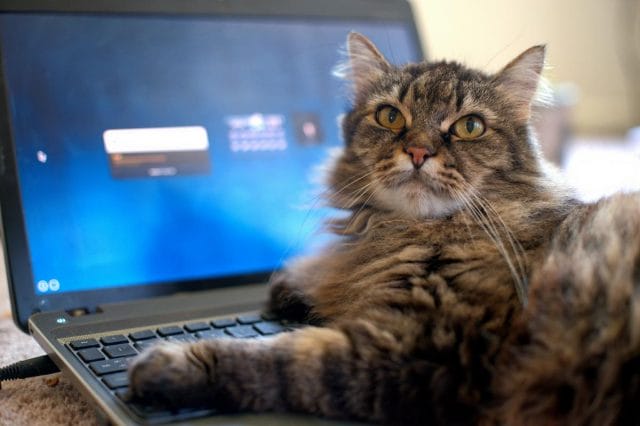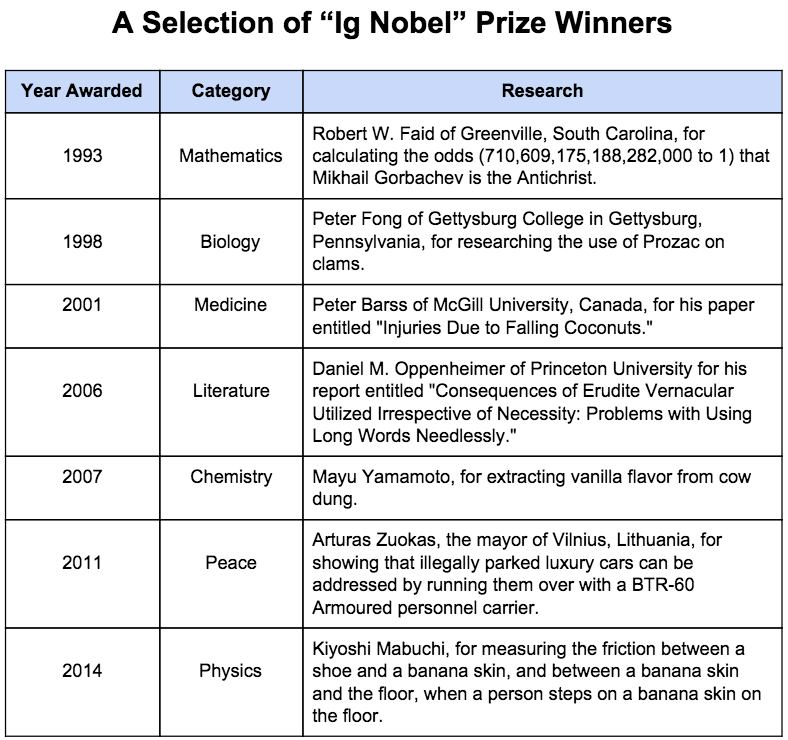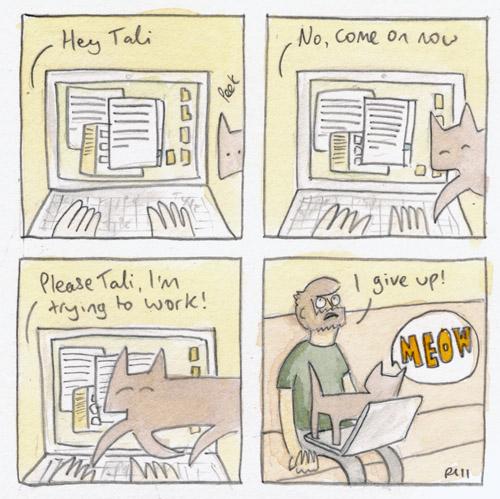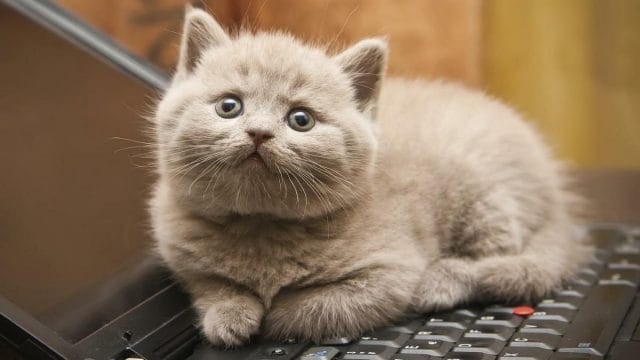
Via PROwabisabi2015 (Flickr)
![]()
Every September, 1,100 finely-dressed denizens gather at Harvard University’s Sanders Theatre — a building crafted with ornate woodwork and golden pillars — for an unusual ceremony.
Launched in 1991 by science/humor magazine Annals of Improbable Research, the “Ig Nobel” awards (a parody of the Nobel Prize) recognizes ten achievements per year, in a wide variety of fields, that “first make people laugh, and then make them think.” Often, the winning ideas are slightly moronic, and border on the absurd:

Priceonomics; via Improbable Research
While 140 Ig Nobel prizes have been doled out in history, only one has been awarded in the category of “computer science.” This distinct honor goes to PawSense, a software designed to detect when a cat walks across a computer keyboard.
As cat owners all too familiar with this phenomenon, we had to find out what PawSense was all about.
***
After earning a degree in computer science from Arizona State University in the mid-90s, Chris Niswander spent his post-college days coding puzzle mazes, building Japanese language learning programs, and building python obfuscators. Then, somewhat fortuitously, the idea of the century descended upon him.
“One day, my sister’s cat, Amos, walked across her computer keyboard and managed to uninstall some software, delete crucial files, and crash the machine,” Niswander recalls. “I figured out that he’d triggered a series of keyboard shortcuts (ALT, CTRL, F1-F2) with his paws.”
Niswander was no stranger to feline antics. He knew the creatures had a propensity for sitting on strange things — especially computers, which they seem to treat as tiny, heated chairs. From talking to other pet owners, he quickly established that cat computer squatting was a very common problem, for which there seemed to exist no discernable solution.
So, Niswander took up a seemingly Sisyphean feat: creating a software program that would repel cats. “I thought it was a really funny idea,” he says. “But the only way it would be funnier would be as a real piece of software that people actually use.”
He christened it “PawSense.”

Via Eat, Sleep, Sniff (Rus Hudda)
The first order of business was writing a code that could detect “cat-like typing.” Niswander’s approach was, of course, at the highest level of scientific soundness: “I made these cardboard cutouts of cat paws, then ‘walked’ them across my keyboard, pretending I was a cat.”
Since virtually all cat paws are larger than any single keyboard key, he found that with each step, a cat would press down key combinations. He compiled a gargantuan list of these possible combinations, weeding out those that were actually real commands. Then, through scrupulous field observation of cats in motion, he factored in the timing and momentum of a cat’s steps:
“When a cat first places its paw down, the cat’s weight plus the momentum of the cat’s movement exerts pounds of force on the keyboard, primarily through the cat’s paw pads. The cat’s paw angles and toe positions also undergo complex changes while the paw lands on the keyboard. This forces keys and often key combinations down in a distinctive style of typing which includes unusual timing patterns.”
The goal was to analyze keypress timings and combinations to distinguish cat typing from human typing — and once Niswander had locked down a “formula” for determining this, he wrote a code that automatically detected it.
Here’s how the program works. Every time your computer boots up, PawSense automatically starts up in the background to watch over your computer system and monitor keyboard activity. When PawSense detects a cat (usually “within one or two pawsteps”), it triggers a popup window that locks the keyboard, preventing the animal from wreaking havoc on one’s operating system.
When this happens:
…the cat is greeted with an ominous grey screen:

In addition, a loud, annoying noise is triggered from the computer’s speakers, so as to scare away the heat-seeking furball. The program comes with a few presets (“annoying harmonica,” and “hissss”), but users can also program their own sounds.

PawSense is highly customizable: users can create their own sounds, and also choose to ignore certain triggered keystrokes
Over 15 years, Niswander has made various compatibility updates to PawSense (though it is still only available for Windows), and has taken great care to ensure that it is bug-free.
While PawSense started as something of a quirky project, it has since evolved into what Niswander considers to be a useful utility. “It’s not just a joke,” he insists. “It’s a real software utility designed to improve the reliability of computers that are operated under certain adverse conditions.”
His claim has been justified by the dozens of emails he receives from grateful pet owners across the world, many of whom claim the program has trained their cats to steer clear of their computers. “A few years back, a day trader who worked from home emailed me, and said his cat had just walked across his keyboard and ruined a trade, costing him hundreds of dollars,” says Niswander. “He bought PawSense for $20, and never had that problem again.”

Via A.Davey (Flickr)
Another time, he got a letter from a tiger owner, who asked if PawSense software would work on his exotic pal. “I told him, if that happens, the greater concern is probably that your computer still functions,” jokes Niswander.
Most people who purchase PawSense tend to be cat owners who work from home, and live in constant fear of paws ending up where they don’t belong. Though Niswander is wary to disclose how much he’s earned from the software, he does admit that “it has sold sufficiently to justify the effort of making it.”
And what does the future hold for the enterprising programmer?
“I’d like to make a BabySense version,” he admits, “but it’s a little more difficult to determine the random keystrokes of a baby’s tiny, slamming fists.”
For our next post, we explore why nobel prize winners love arts and crafts so much. To get notified when we post it → join our email list.
![]()
This post was written by Zachary Crockett. You can follow him on Twitter here.




